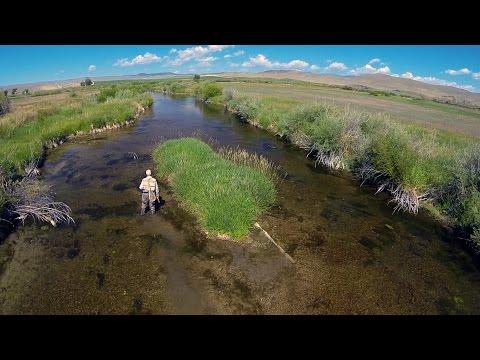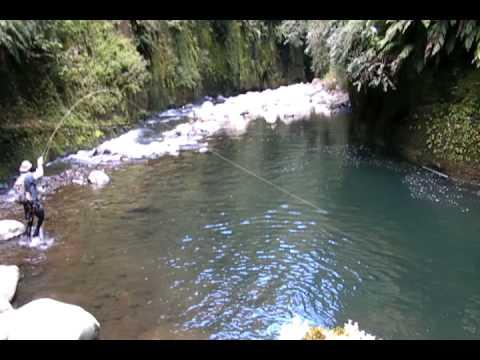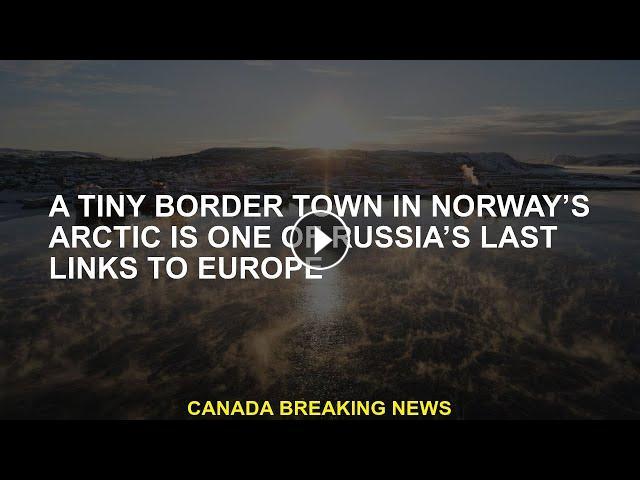#aud-url #russia #kirkenes #norway
https://gotopnews.com/post/1768183
Kirkenes, a Norwegian town of 10,000, is just a short drive from the Russian border. Despite European sanctions against the Putin regime, people and goods are still moving freely, and it is one of the few West ports that Russian ships can still approach. Last year since the war in Ukraine, the Western world has made Russia an unwanted man. The country's planes blocked entering airspace in North America and the European Union, their banks were banned from international payments, oil was banned and their ships excluded ports. Poland is preparing to build an electric fence along its 200-mile border with Kaliningrad, Russia's excavator. But up in Norway, above Arctic Circle, road signs still point nearby Murmansk in Cyrillic alphabet, and border crossing to Russia opens rapidly every morning, allowing a vehicle flow slip through a border hit by rest of Western world. hang up. The Storskog Border Station is the only open crossing point between Russia and the European Schengen region. The town of Kirkenes, a few kilometers away, is one of the three remaining West ports, all in northern Norway, which continue to welcome Russian ships. Russian fleet of Barents Sea, about 140 meters long and 100 crew fishing ships fill the docks, making local maritime technicians busier than ever. RUSSIA Helsinki Kirkenes Murmansk SWEDEN FINLAND Oslo Stockholm 0 200 KM WORLD AND POSTAL, SOURCE: TILEZEN; OPENSTREETMAP PARTICIPANTS RUSSIA Helsinki Russian sailors are traveling around town, swimming in the pool and often entering shops. Luxury vehicles with Russian plates are passing through the city, some of which are headed to the airport where their owners can fly to vacation homes south of Europe. The local Russian consulate reopened visa procedures this month for those who wish to visit. A local travel zone is still in effect, allowing authorized residents on both sides of the border to pass without a visa. The obvious Russian presence in Kirkenes is disturbing some of these people. A van parked a few meters away from consulate is painted in colors of Ukrainian flag and marked "Stop War Putin". "It is not easy go to work every day and work serve Russian ships as it is currently international," said Terje Jørgensen, the local port chief. Money is at least part of the reason. Russian fishing ships are bringing a large amount of crab and cod prey ashore, along with significant income that supports the local population. But their presence also made Kirkenes test site for a question that resonates widely at time when authoritarian strife increased. Is it still possible for a Western democracy to live with a Russian who intends to promote and destroy another leader? In Brussels, Washington and even Ottawa, this question is usually theoretical. He's as muted as the people who walk down the street in Kirkenes. The tree next to the Soviet Liberation Monument in Kirkenes is hung by Ukrainian hearts. Ties with Russia have been close for generations here, but the war in Ukraine has made many feel conflicted. A sign in Kirkenes says Moscow is closer to Norway than Oslo. On way to Storskog Border Station, another sign includes the Kiril name of Murmansk, nearest major Russian city. Terje Jørgensen, the port chief of Kirkenes, agrees that it may be strange to serve Russian ships standing here while harvesting cod and crab. Knut Kristoffersen belongs to a local historical community. Here, the Red Army was greeted as "saviors" in 1940 when fighting against the Nazi invaders of Norway. This region east of the Pasvik River has always been a place between. Before border was set in 1826, people were paying taxes to Russian current, Danish king, Norwegian and Swedish king. For centuries, the Pomor merchants in the region traded Russian flour for fish and pelts from northern Norway, which was so rich that a local Pancin trade language developed. It was the Red Army that chased Nazi forces from Kirkenes, Germany's eyesore port and iron mine. "They were greeted as saviors," said Knut Kristoffersen, a member of a local history association. The Cold War settled here uneasy. In 1959, Norwegian wrestlers and footballers set sail for the forbidden Soviet waters on a fishing boat to compete against their brothers in Murmansk. The same year, an agreement between Norway, Soviet Union and Finland opened the way for hydro dams to be established on Pasvik River, a construction project that Soviet leader Nikita Kruschev visited. The fall of the Iron curtain has opened new ways for friendship and profit. In 1993, the Barents Secretariat was activated to support Norwegian-Russian co-operation. Marriage created families that crossed the line. In the town of Nikel on the Russian border, people began to learn Norwegian. Similarly, a university taught Russian language in Kirkenes, 10,000, which is home to
https://gotopnews.com/post/1768183
Kirkenes, a Norwegian town of 10,000, is just a short drive from the Russian border. Despite European sanctions against the Putin regime, people and goods are still moving freely, and it is one of the few West ports that Russian ships can still approach. Last year since the war in Ukraine, the Western world has made Russia an unwanted man. The country's planes blocked entering airspace in North America and the European Union, their banks were banned from international payments, oil was banned and their ships excluded ports. Poland is preparing to build an electric fence along its 200-mile border with Kaliningrad, Russia's excavator. But up in Norway, above Arctic Circle, road signs still point nearby Murmansk in Cyrillic alphabet, and border crossing to Russia opens rapidly every morning, allowing a vehicle flow slip through a border hit by rest of Western world. hang up. The Storskog Border Station is the only open crossing point between Russia and the European Schengen region. The town of Kirkenes, a few kilometers away, is one of the three remaining West ports, all in northern Norway, which continue to welcome Russian ships. Russian fleet of Barents Sea, about 140 meters long and 100 crew fishing ships fill the docks, making local maritime technicians busier than ever. RUSSIA Helsinki Kirkenes Murmansk SWEDEN FINLAND Oslo Stockholm 0 200 KM WORLD AND POSTAL, SOURCE: TILEZEN; OPENSTREETMAP PARTICIPANTS RUSSIA Helsinki Russian sailors are traveling around town, swimming in the pool and often entering shops. Luxury vehicles with Russian plates are passing through the city, some of which are headed to the airport where their owners can fly to vacation homes south of Europe. The local Russian consulate reopened visa procedures this month for those who wish to visit. A local travel zone is still in effect, allowing authorized residents on both sides of the border to pass without a visa. The obvious Russian presence in Kirkenes is disturbing some of these people. A van parked a few meters away from consulate is painted in colors of Ukrainian flag and marked "Stop War Putin". "It is not easy go to work every day and work serve Russian ships as it is currently international," said Terje Jørgensen, the local port chief. Money is at least part of the reason. Russian fishing ships are bringing a large amount of crab and cod prey ashore, along with significant income that supports the local population. But their presence also made Kirkenes test site for a question that resonates widely at time when authoritarian strife increased. Is it still possible for a Western democracy to live with a Russian who intends to promote and destroy another leader? In Brussels, Washington and even Ottawa, this question is usually theoretical. He's as muted as the people who walk down the street in Kirkenes. The tree next to the Soviet Liberation Monument in Kirkenes is hung by Ukrainian hearts. Ties with Russia have been close for generations here, but the war in Ukraine has made many feel conflicted. A sign in Kirkenes says Moscow is closer to Norway than Oslo. On way to Storskog Border Station, another sign includes the Kiril name of Murmansk, nearest major Russian city. Terje Jørgensen, the port chief of Kirkenes, agrees that it may be strange to serve Russian ships standing here while harvesting cod and crab. Knut Kristoffersen belongs to a local historical community. Here, the Red Army was greeted as "saviors" in 1940 when fighting against the Nazi invaders of Norway. This region east of the Pasvik River has always been a place between. Before border was set in 1826, people were paying taxes to Russian current, Danish king, Norwegian and Swedish king. For centuries, the Pomor merchants in the region traded Russian flour for fish and pelts from northern Norway, which was so rich that a local Pancin trade language developed. It was the Red Army that chased Nazi forces from Kirkenes, Germany's eyesore port and iron mine. "They were greeted as saviors," said Knut Kristoffersen, a member of a local history association. The Cold War settled here uneasy. In 1959, Norwegian wrestlers and footballers set sail for the forbidden Soviet waters on a fishing boat to compete against their brothers in Murmansk. The same year, an agreement between Norway, Soviet Union and Finland opened the way for hydro dams to be established on Pasvik River, a construction project that Soviet leader Nikita Kruschev visited. The fall of the Iron curtain has opened new ways for friendship and profit. In 1993, the Barents Secretariat was activated to support Norwegian-Russian co-operation. Marriage created families that crossed the line. In the town of Nikel on the Russian border, people began to learn Norwegian. Similarly, a university taught Russian language in Kirkenes, 10,000, which is home to
- Category
- Fly Fishing
- Tags
- A tiny, Arctic Russia, Barents Sea




